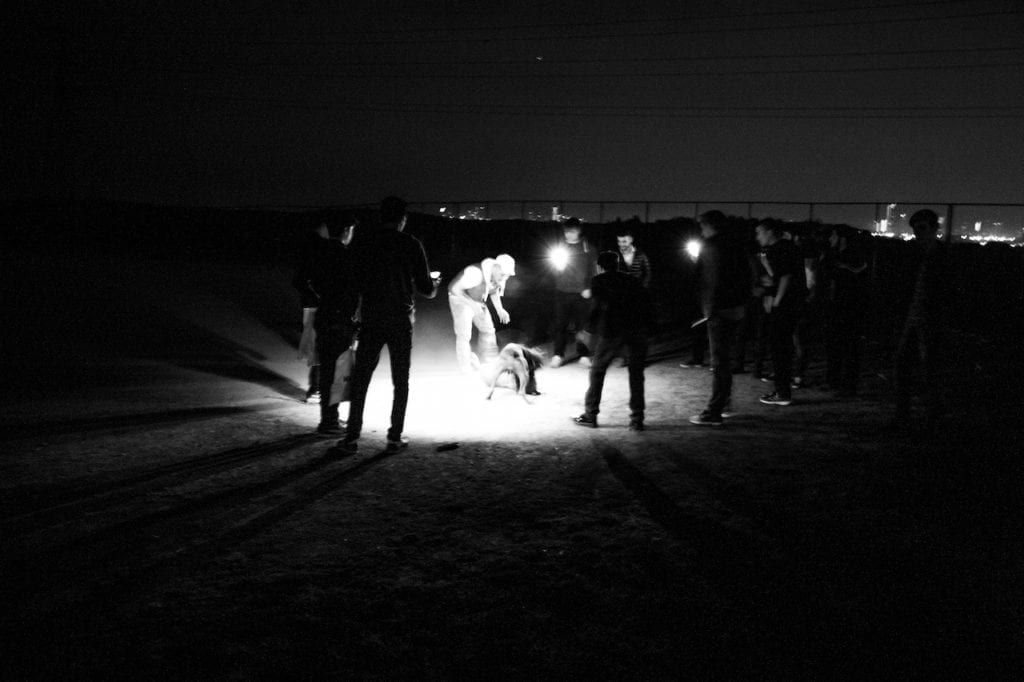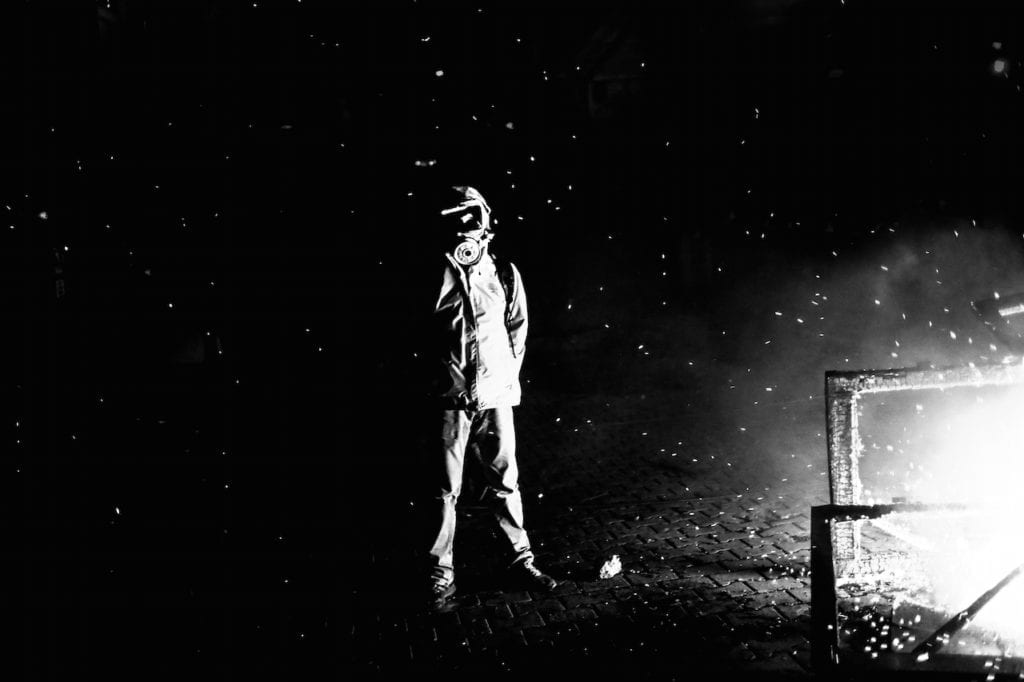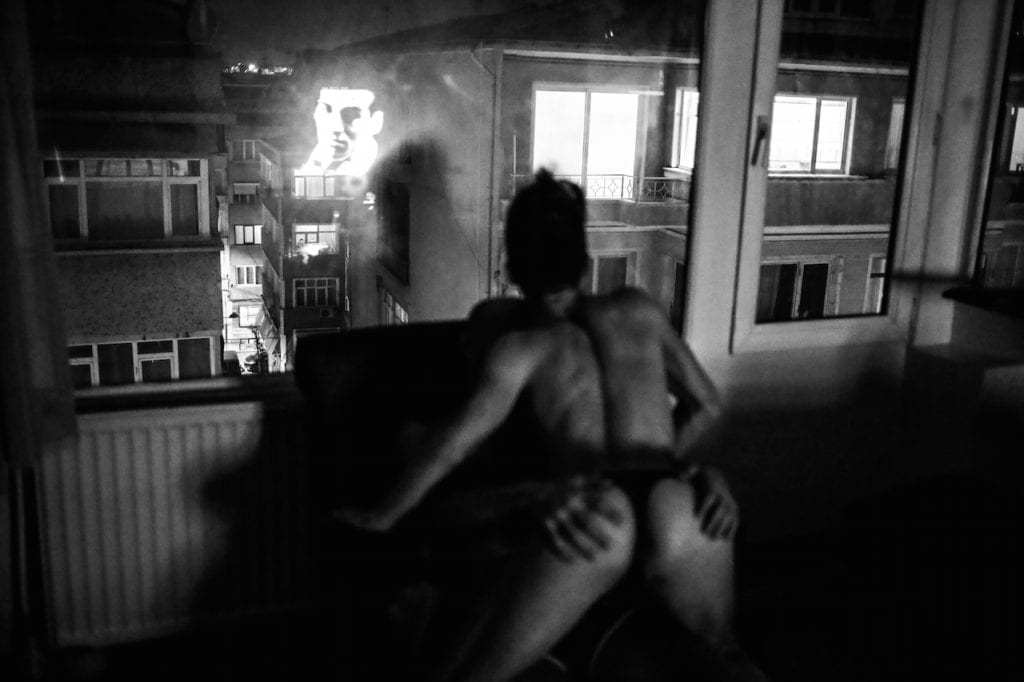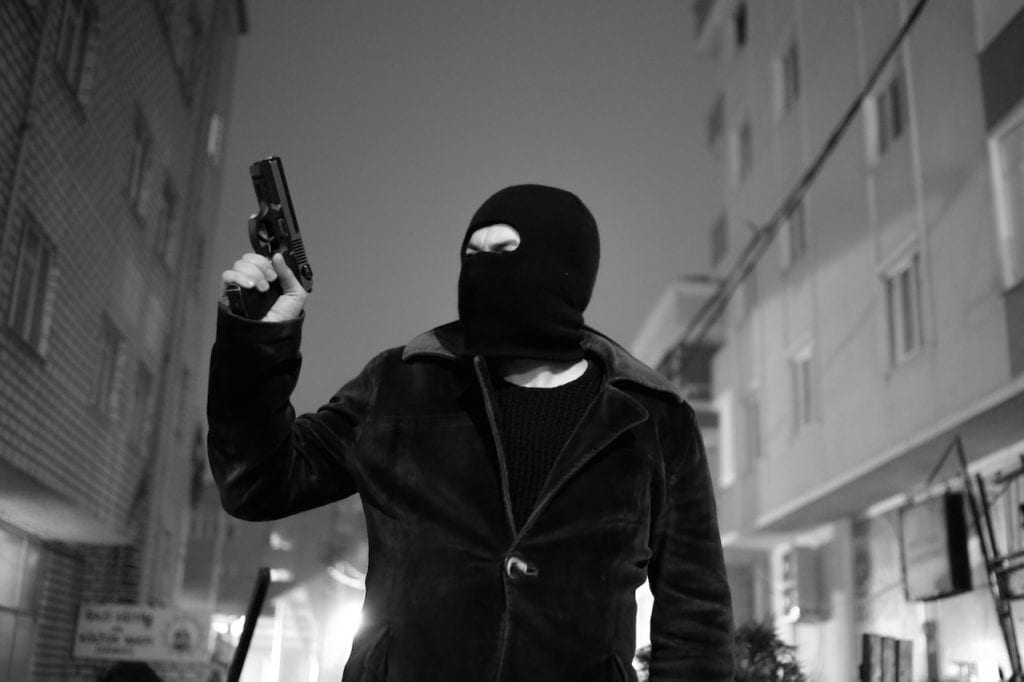“I believe Turkey is photographed deficiently,” says Çağdaş Erdoğan. “The photographs we see of Turkey are propaganda for the nationalist movement, or they’re Orientalist images for the outer world since these are what they want to see.”
Erdoğan, 24, is a Kurdish Turk born in a small town in the east of the country, who has established himself as one of the leading young photojournalists in a newly authoritarian and conservative Turkey. While in the middle of a sociology degree in the city of Konya, he was inspired by George Georgiou’s series Fault Lines: Turkey/East/West.
After meeting his mentor, Turkish documentary photographer Kürşat Bayhan, Erdoğan quit the course and moved to Istanbul in 2013. “Secularism has been suppressed to the point where it is almost invisible,” says Erdoğan. “I wanted to find a way to scrutinise Turkish society’s relationship with reality.”
“Many photojournalists can’t work in Istanbul,” says Bayhan. “But he moved to the city’s Gazi district, one of the most dangerous in Istanbul, to tell the unknown stories of Turkey.”
Together with Bayhan, Erdoğan is a key player in SO by 140journos, a new alliance of journalists who aspire to create imagery that hasn’t been filtered by the increasingly pro state media. “SO is a reaction to the ‘post-truth’ syndrome and political retrogression,” says Erdoğan. “We want to leave our audience face to face with reality.”
This is a dangerous set of ambitions given President Recep Tayyip Erdoğan’s track record of intimidating his opponents and the free press. “The media has nearly died in Turkey under pressure from the government,” says Bayhan. “Hefty fines, lawsuits and possible imprisonment hang over their heads, but photographers like Çağdaş do not want to ignore the crisis their country is experiencing.”
Erdoğan and his contemporaries continue to take pictures we would never otherwise see. He cites as an example the photo he took at the funeral of Günay Özarslan, a female activist accused of terrorist activities who was killed by state forces during a house raid. The image was published by The New York Times, leading to more stills of civil conflict in Turkey being published by The Guardian, BBC, The Times and Der Spiegel among others.
One of Erdoğan’s first stories is of the illegal dog-fight circuit in Gazi. It was a “difficult and dangerous” environment to take photographs, he says. The series is part of his first long-term project, one that will capture the nightlife is Istanbul, the lives of LGBT people within an emboldened Islamic society, and the resistance movement that exists in such underground places. Titled Control, this first chapter was recently published by Akina Books.
cagdaserdogan.com www.140journos.com https://akinabooks.com/ This article was published in the June 2017 BJP, issue #7860 – Ones to Watch, The Talent Issue, which is available via www.thebjpshop.com

From the book Control © Çağdaş Erdoğan [this series was formerly known as Night Blind] 
From the book Control © Çağdaş Erdoğan [this series was formerly known as Night Blind] 
From the book Control © Çağdaş Erdoğan [this series was formerly known as Night Blind] 
From the book Control © Çağdaş Erdoğan [this series was formerly known as Night Blind]
Erdoğan, 24, is a Kurdish Turk born in a small town in the east of the country, who has established himself as one of the leading young photojournalists in a newly authoritarian and conservative Turkey. While in the middle of a sociology degree in the city of Konya, he was inspired by George Georgiou’s series Fault Lines: Turkey/East/West.
After meeting his mentor, Turkish documentary photographer Kürşat Bayhan, Erdoğan quit the course and moved to Istanbul in 2013. “Secularism has been suppressed to the point where it is almost invisible,” says Erdoğan. “I wanted to find a way to scrutinise Turkish society’s relationship with reality.”
“Many photojournalists can’t work in Istanbul,” says Bayhan. “But he moved to the city’s Gazi district, one of the most dangerous in Istanbul, to tell the unknown stories of Turkey.”
Together with Bayhan, Erdoğan is a key player in SO by 140journos, a new alliance of journalists who aspire to create imagery that hasn’t been filtered by the increasingly pro state media. “SO is a reaction to the ‘post-truth’ syndrome and political retrogression,” says Erdoğan. “We want to leave our audience face to face with reality.”
This is a dangerous set of ambitions given President Recep Tayyip Erdoğan’s track record of intimidating his opponents and the free press. “The media has nearly died in Turkey under pressure from the government,” says Bayhan. “Hefty fines, lawsuits and possible imprisonment hang over their heads, but photographers like Çağdaş do not want to ignore the crisis their country is experiencing.”
Erdoğan and his contemporaries continue to take pictures we would never otherwise see. He cites as an example the photo he took at the funeral of Günay Özarslan, a female activist accused of terrorist activities who was killed by state forces during a house raid. The image was published by The New York Times, leading to more stills of civil conflict in Turkey being published by The Guardian, BBC, The Times and Der Spiegel among others.
One of Erdoğan’s first stories is of the illegal dog-fight circuit in Gazi. It was a “difficult and dangerous” environment to take photographs, he says. The series is part of his first long-term project, one that will capture the nightlife is Istanbul, the lives of LGBT people within an emboldened Islamic society, and the resistance movement that exists in such underground places. Titled Control, this first chapter was recently published by Akina Books.
cagdaserdogan.com www.140journos.com https://akinabooks.com/ This article was published in the June 2017 BJP, issue #7860 – Ones to Watch, The Talent Issue, which is available via www.thebjpshop.com




